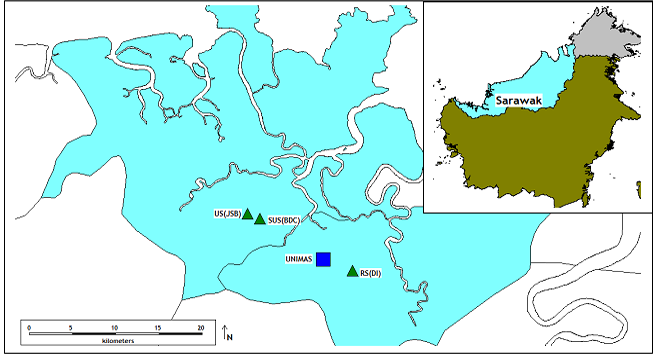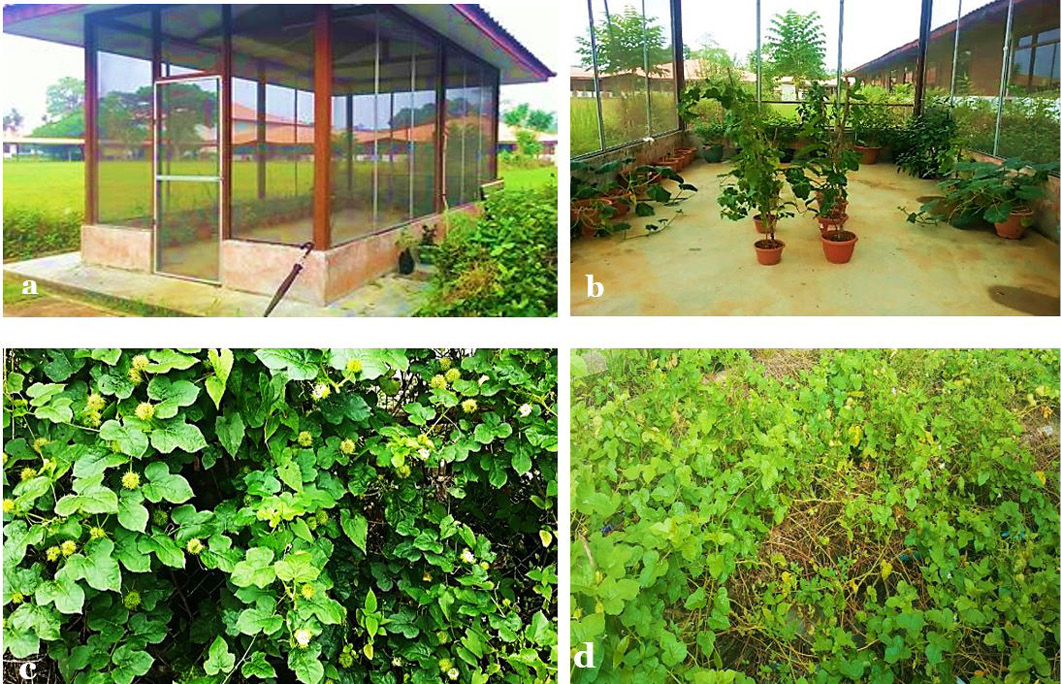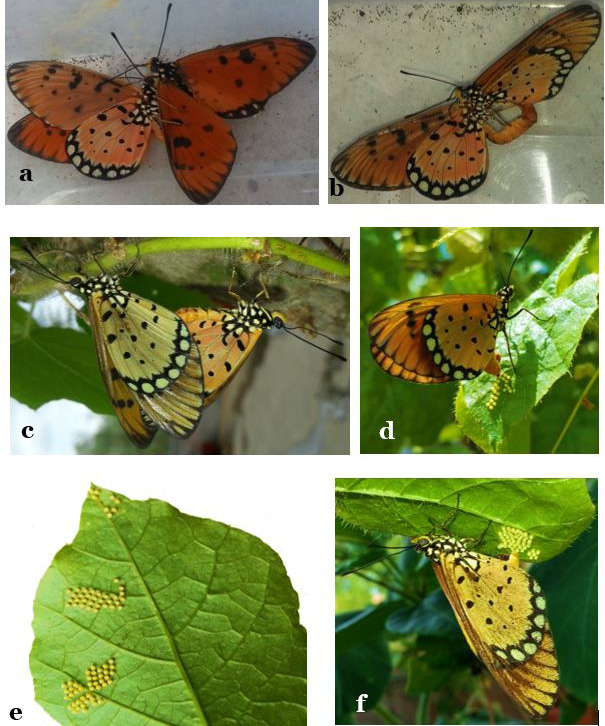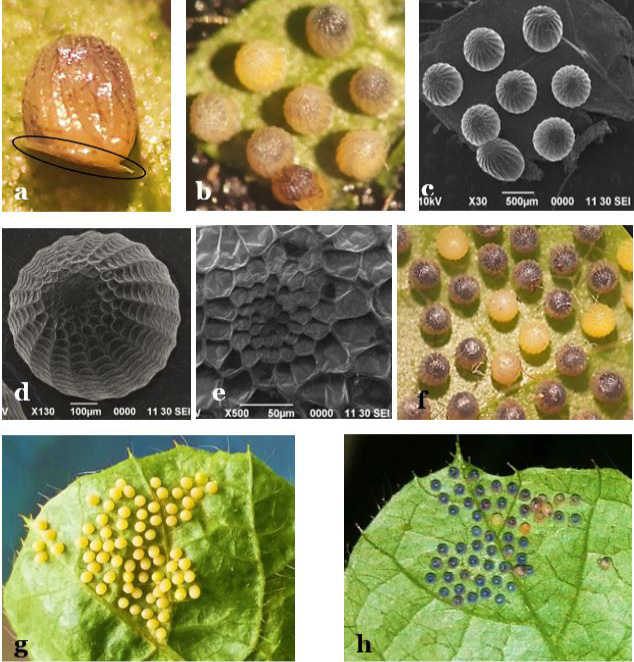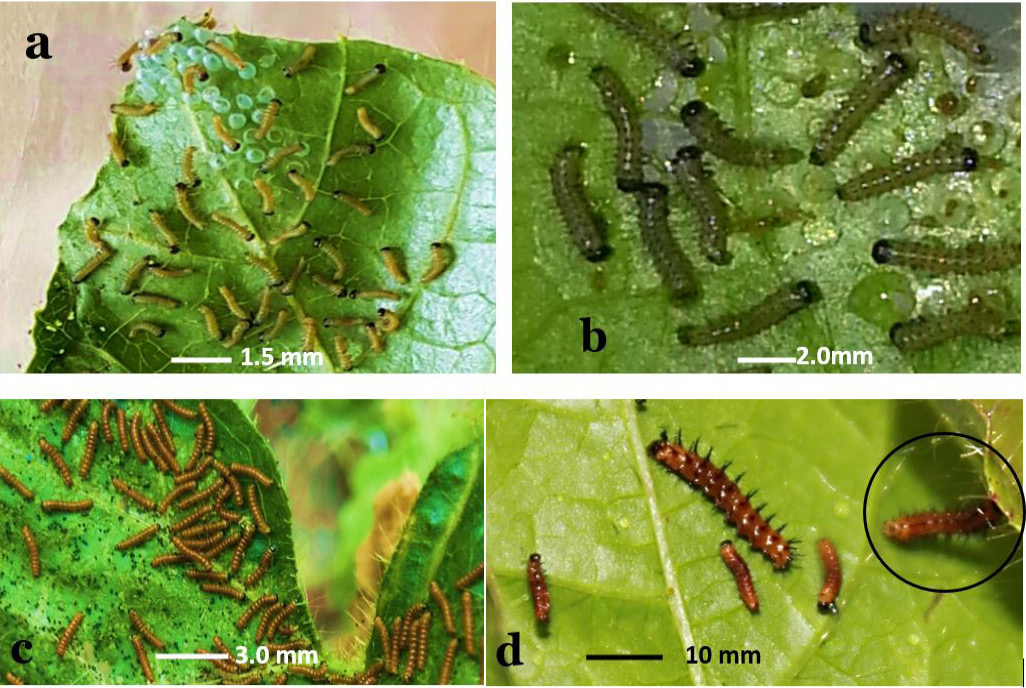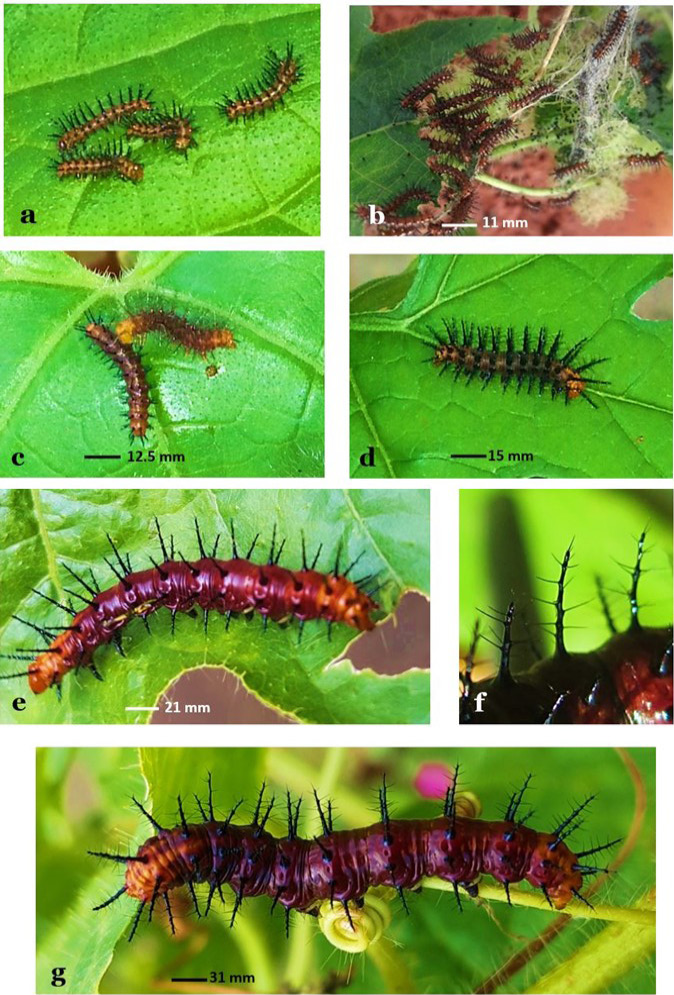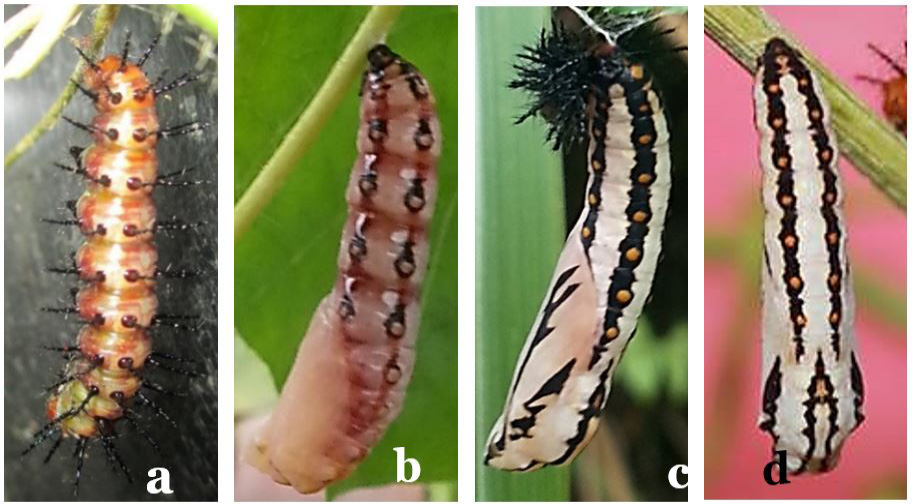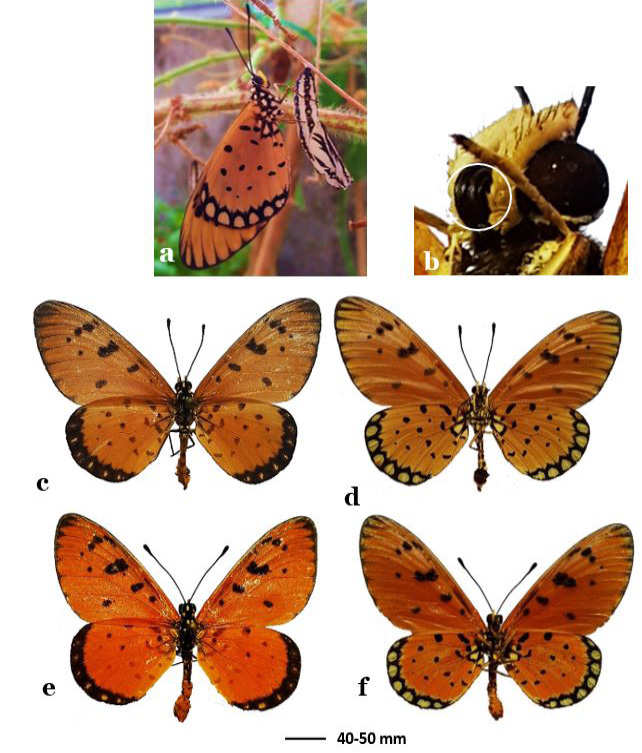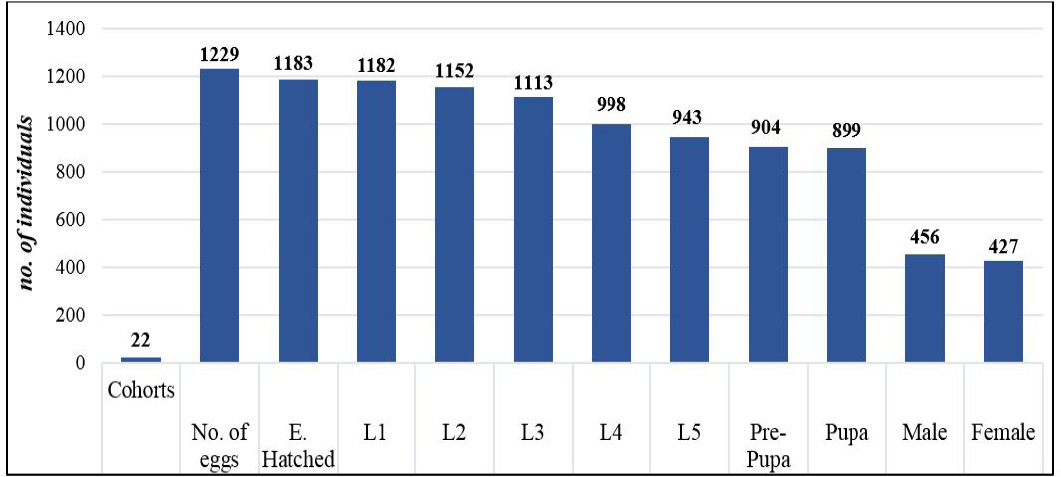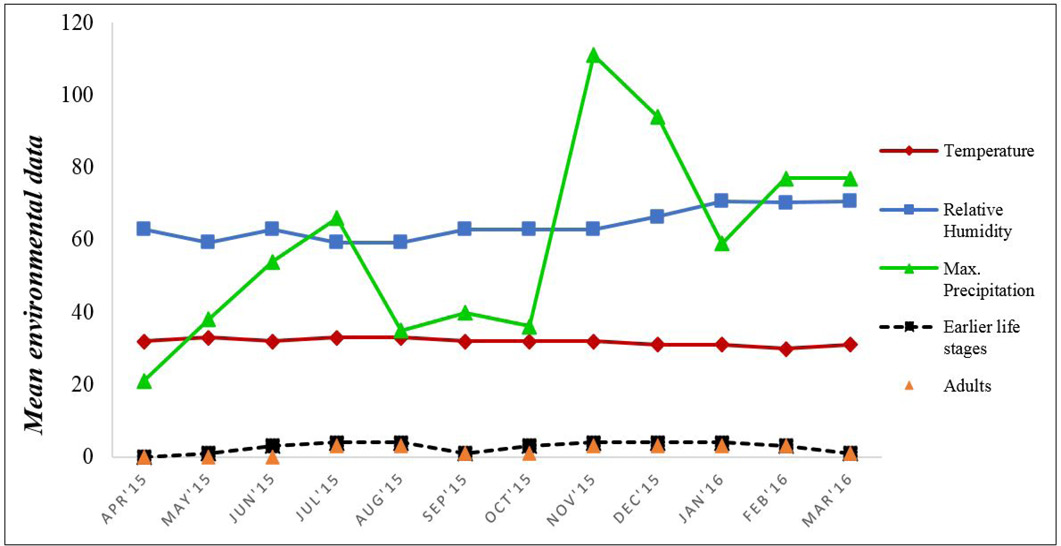Biology of an Exotic Butterfly Acraea terpsicore (Linnaeus, 1758) (Nymphalidae: Heliconiinae), in a Newly Invaded Region, Sarawak, Borneo
Sabina Noor1*, Fatimah Abang1 and Hamady Dieng2
Map showing three sampling sites based on urbanization levels and UNIMAS campus. Inbox map holds the details of Sarawak and Borneo (Source: DivaGIS; 7.5).
Study sites and host plant: (a) and (b) the netted house (butterfly) used for the events of mating and oviposition in the study (outside and inside view, respectively); (c) Primary food plant (Passiflora foetida) of A. terpsicore showing the lavish growth in the study site (DI); (d) Urban site (JSB) and the plentiful growth of host plant.
Courtship behaviour and oviposition in A. terpsicore: (a) and (b) Male adults grasping each other before released to the netted house, eager for mating (after emergence from pupa); (c) Mating pair in netted house; (d) Female ovipositing on the upper side of leaf (P. foetida); (e) Patches of eggs laid at a single time on the same leaf of P. foetida; (f) Oviposition event.
Eggs of A. terpsicore: (a) Lateral view of an egg with encircled area of glue (visible); (b) Top view of eggs under a Stereomicroscope; (c) Top view of eggs under SEM with a resolution of x30; (d) Single egg under SEM with a resolution of x130; (e) Micropyle of an egg under SEM with a resolution of x500; (f) cluster of eggs with discrepancy; mature (black head) and under development (pale yellow); (g) Typical egg cohort (after oviposition); (h) cohort of mature eggs (8 hrs before hatching).
Immature stages of A. terpsicore: (a) Newly emerged 1st instars and egg shells; (b) 1st instar larvae after 12hrs; (c) gregarious group of 1st instar larvae feeding on Passiflora foetida; (d) earlier 1st instar and newly moulted (encircled) 2nd instar larvae on the same spot.
Immature stages of A. terpsicore: (a) fully grown second instar stage; (b) batch of 2nd instars feeding gregariously, while the silken web can be visualized as well; (c) Newly moulted 3rd instar; (d) fully grown third instar larva, (e) full sized fourth instar stage; (f) close up of the branched spines present in rows over each body segment on fourth instar larva; (g) A fully grown fifth instar larva (last instar) of A. terpsicore.
(a) Pre-pupal stage with visible white patches over the body; (b) Pupation stage and formation of wing case; (c) completely sclerotized pupa with last instar exuvia attached at the base (lateral view); (d) dorsal view of the fully matured pupa.
The adults of A. terpsicore: (a) Male adult emerged from pupa resting on the discarded pupal case; (b) head of the imago with visible compound eyes, labial palps (hairy, yellow) and coiled proboscis (encircled); (c) Female upper side; (d) female under side; (e) Male upper side; (f) Male under side.
The overall survivorship rate of each developmental stage of A. terpsicore for 22 cohorts.
Population index of A. terpsicore, in relation to the average temperature, relative humidity and maximum precipitation throughout the duration.





